
Precision Horology
PRECISION CLOCK Q1
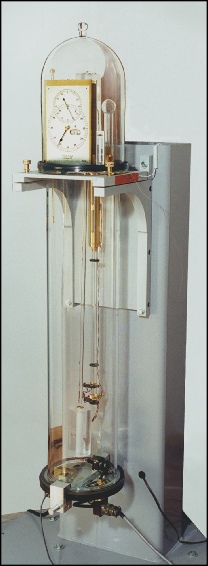
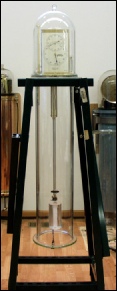
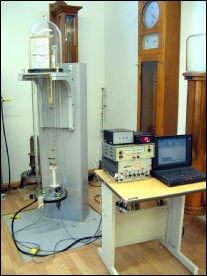
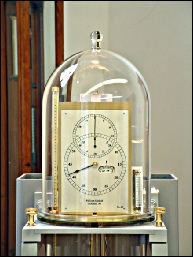
There were a number of ideas I had which I wanted to incorporate in this clock. It should be seconds beating utilizing a pendulum and bobs that were of a material that had a minimum coefficient of expansion so as to minimize temperature related problems. The pendulum must be as free as possible to minimize the effect of pendulum “work”. It should run in a vacuum to eliminate barometric effects and to increase Q. I wanted to minimize the effects of suspension wear (in the case of knife edges). I felt impulsing the pendulum in both directions was important and utilizing magnetic
impulsing and sensing seemed like a practical method to use in the design because I could more easily control them. Apart from the practical considerations, I wanted the clock to have an attractive, functional look.
How the clock was to be mounted was also an important consideration. I wanted to
keep the clock in my workshop. It was important to isolate the clock mounting as
much as possible so that walking around the shop or running a machine would only
have a minimal effect. When I had the concrete foundation/floor poured for the shop,
I had two large 4 cubic foot "wells" built into the floor into which I fitted 2 blocks
of specially reinforced concrete. Each block weighed about 1 1/2 tons and rested
(or floated) on a set of isolating dampers so the block was physically isolated from
vibrations in the room -
Clock Q1 with its associated electronics
regard to the usual vibrations from the road and my shop, it does not isolate the clocks from very slow wave vibrations(2 or 3 hertz) from distant strong earthquakes. The effects from certain earthquakes can be seen in the clock record.
It took me about a year and a half to complete the clock in my spare time.
←↓→
Finished clock Q1
Clock Q1 in the test stand
Q1 shown mounted on its stanchion with its electronics and the computer used to measure rate with a MicroSet Timer
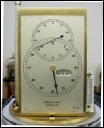
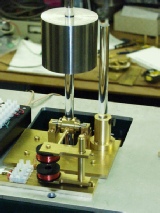
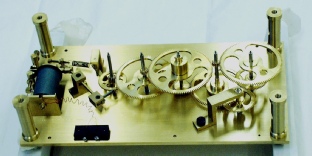
Q1 experimental dial movement↓
Q1 in the test stand with an experimental invar top bob.→
Click here to see a video of Q1
running